
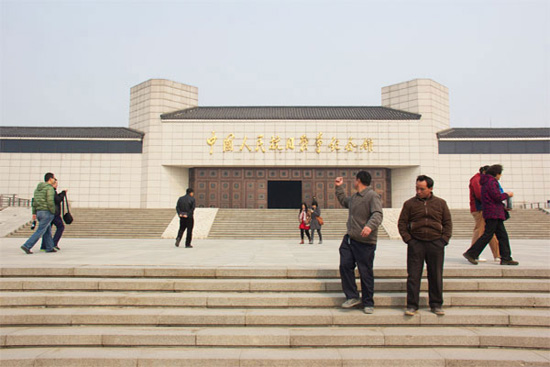 |
| The austere exterior of the Museum of the War of Chinese People's Resistance Against Japanese Aggression (CRIENGLISH.com/William Wang) |
The most riveting and disturbing part of the museum follows: Part IV - The Japanese Army's Extremely Cruel Atrocities. Hard statistics finally make their appearance, along with some emphatic language. "The Japanese army bombed over 900 cities and numerous rural areas, wantonly massacred innocent people, cruelly maltreated and killed captives, enslaved forced laborers, adopted the bacteriological warfare and chemical warfare."
There's no doubt that the Japanese policy to "burn all, kill all, loot all" caused horrific suffering across China, and the proof presented in photos is definitely not for the faint of heart or stomach. Large format black and white photos of bodies piled up or dismembered are all the more shocking when the subjects are women or children. Japan's disturbing use of Chinese "comfort women" is duly noted, as is the damage caused by their tactics of germ warfare, chemical warfare, and opium sales.
All information is factual enough, and the Japanese perspective appears in the final room. In the concluding gallery, the Japanese experience is limited to photos of Japanese solemnly apologizing, graciously accepting China's humanitarian assistance, and photo ops for both countries' leaders.
The Nanjing Massacre Memorial Hall opened two years before the MWCPRAJ, focusing exclusively on the eight years of horrors that transpired in that city. Perhaps due to its broader scope, MWCPRAJ doesn't quite pack the same emotional punch, nor does it feature as much Japanese perspective (which is some of the most interesting material of the Nanjing museum).


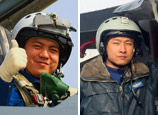
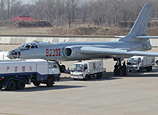
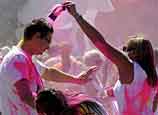
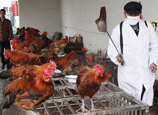
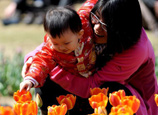
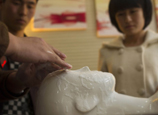
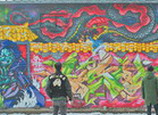

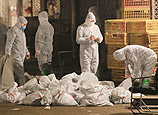
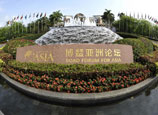






 Shanghai reports 2 more cases of H7N9
Shanghai reports 2 more cases of H7N9


![]()
